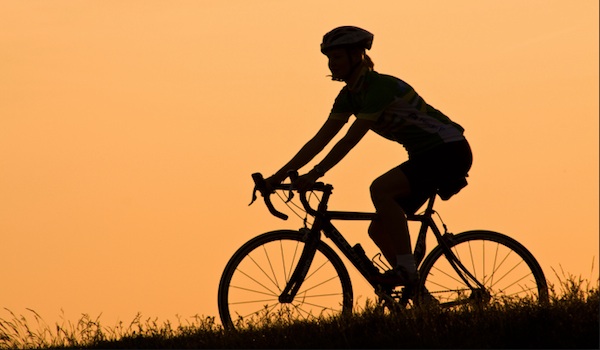 As with any sort of exercise, biking comes with a certain amount of risk. However, common cycling injuries can be prevented if you take the proper precautions.
As with any sort of exercise, biking comes with a certain amount of risk. However, common cycling injuries can be prevented if you take the proper precautions.
Achilles Tendonitis
This is a common injury that comes from overuse. However, this can also be caused by a poor bike fit and shoe cleats that are not properly positioned. Achilles tendinitis causes inflammation which in turn will cause you some pain in your ankle. If you think this is developing in you, go easy on your training for a few days. After any exercise make sure you apply ice to the tendon to fight any inflammation you may have.
To prevent this common cycling injury get a proper bike fit and specifically review your cleat position with the fit professional.
Patellar Tendonitis/Knee Pain
This is another injury that plagues the tendons. The tendons of your knee are easily affected by bad cycling technique such as low seats and cycling in big gears for too long. By doing so, you put a lot of pressure on the tendons in your knee that should have been placed on the stronger gluteal muscles instead.
To prevent knee pain cycling check your saddle height, your saddle fore and aft position, your cleat position and even your pedal stroke. Also ensure that you don’t increase your cycling volume more than you are able to handle too quickly and give yourself ample time to warm up.
Broken Bones
The two most common broken bones for a cyclist are the clavicle (collarbone) and the scaphoid (a thumb bone). These are the bones that absorb the most force when you brace yourself in a fall. Because you can’t really control whether or not you crash on your bike, you should at least know how to fall properly. The important thing to remember is try not to brace yourself with your face! In all seriousness, it depends on what kind of crash is happening. For instance if you are going over the handle bars, try and get your hands out in front of you to brace your fall, tuck your head in and allow yourself to roll over the shoulder that has the leading arm out.
General rules when you fall: unclip and try and get away from your bike. Try to slow down quickly but don’t try and immediately stop your momentum because that is when you brake bones.
Saddle Sores
Avid cyclists know this injury well. Saddle sores are caused by the friction between your skin and the bike seat during long bike rides. A bike seat that is too high and bike shorts that are too old with minimal protection are the most common secondary causes of saddle sores.
You can avoid saddle sores by using chamois cream while you ride, especially if you’re a cyclist that moves around a lot. If you do develop saddle sores, you’ll likely have to take a break and treat with skin creams to ease the pain.
Lower Back Pain
Lower back pain is usually caused by long bike rides or steep continuous climbs. The muscles of the lower back do extra work when you cycle for a long period of time and are subjected to more stress. Over time, this stress can cause continuous pain, strained muscles and inflammation. However, the best way to avoid this problem isn’t to stop taking long bicycle rides.
The best way to ease the back pain is to have a core strengthening exercise program for days when you aren’t cycling. Strong back muscles can take more stress and building up those muscles is essentially a cure.
Neck Pain
Neck pain can be caused by fatigue (just like lower back pain) or a poor bike fit and can be alleviated by strengthening exercises and a proper fit. Also, relax during your ride. A tight grip and tense posture will cause more pain in your neck than with a relaxed posture.
Foot Pain
Foot pain cycling can be caused by a poor fitting shoe or improper bike cleat positioning.
To cure foot pain cycling you should find a shoe that fits properly! Generally foot numbness, or hot foot is caused by a shoe that is too small. The easiest way to find out if a shoe is large enough for your foot is to take out the insole and make sure there is nearly an eighth of an inch of the insole sticking out all the way around your foot. If there is not, it is too small. The other issue is to adjust your cleats.
Numb Hands
Your hands go numb when nerves are being pinched and that is generally due to a poor position on the bike causing your hands to support too much of your weight or your hand position or wrist position is incorrect.
To alleviate this common cycling injury tilt the nose of your saddle up a degree, make sure that your wrists and hands are flush with your forearms (no bends), and buy some gloves and better handle bar tape to spread out the pressure.
Common Cycling Injuries
You may have noticed a trend here in the most common cycling injuries to prevent and that is bike fit! If your bike does not fit properly your have exponentially increased your chances of getting injured while cycling.
Common cycling injuries are sometimes easy to miss when they first pop up. This is because muscle soreness is a byproduct of exercise but not necessarily a problem. However, letting any of these injuries go will cause even more problems down the road. Make sure that you pay close attention to where you feel sore and why you may be feeling that way. Keeping a close eye on yourself may just save you a doctor’s visit and weeks on the couch nursing your runaway common cycling injuries.